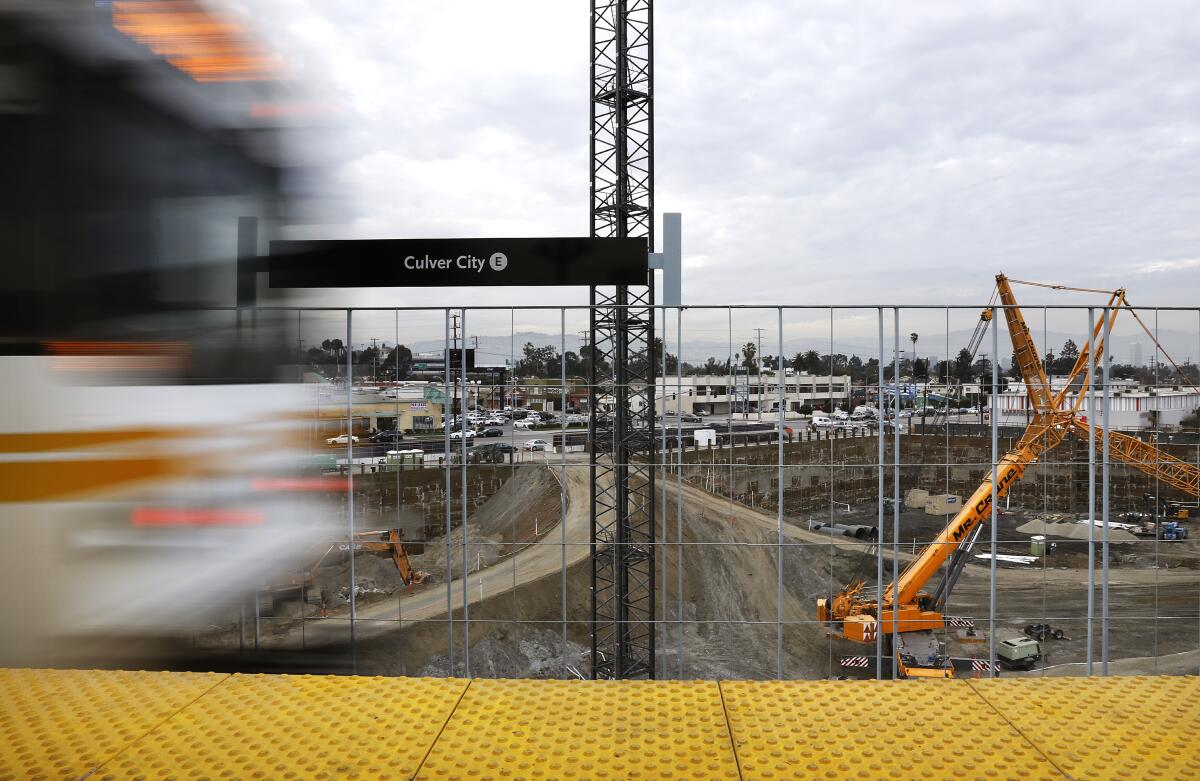Letters to the Editor: How transit-friendly development is destroying affordable housing in L.A.

- Share via
To the editor: I get so tired of people assuming that those of us against building new housing near transit corridors are NIMBYs. I live along one of those transit corridors, in a blue-collar neighborhood with a lot of new construction. We are being forcibly gentrified. (“L.A. has a program to build affordable housing near transit. Of course, NIMBYs want to shut it down,” editorial, Sept. 9)
First, there is an assumption that living along a transit corridor means that transit replaces a car. Many of us work in areas where reliable transit does not yet reach, and our hours do not align with those ideal for taking the bus or train. It’s wrong to assume that everyone moving into units adjacent to transit lines won’t use their cars.
Second, objecting to developers destroying our neighborhood is not NIMBYism. We are not rich people complaining about lower-income folks moving in; in fact, we would support the construction of units intended for working poor and homeless people.
In reality, developers are tearing down historic homes and replacing them with high-end condos and large complexes, using concessions to standard requirements and ignoring area concerns to speed up the process.
Even worse, the 20% of units set aside as “affordable” are anything but. Many are more expensive than the rent currently paid by those being forced out of their longtime homes.
Neighborhoods do not need to be destroyed to satisfy developer greed. Don’t destroy our communities and turn our streets into East Coast-style corridors for the wealthy.
Patricia Loeb, Los Angeles
..
To the editor: Affordable housing naturally occurs with adequate housing supply, so the need for housing subsidies and rent control indicates that the housing supply is inadequate.
The culprit: single-family zoning. The solution: upzoning.
The L.A. Times Editorial Board correctly praises the Transit-Oriented Communities program, which has nearly 20,000 units in the pipeline. Still, the county-wide need is more than 500,000 new units.
Beyond addressing the existing housing shortfall, upzoning will create other benefits: New housing will meet state energy, fire safety, seismic design and accessibility standards. Also, the construction activity will bolster the regional economy and provide stable (union) careers for construction workers.
Finally, the increased density will allow effective urban forestry and mass transit programs, accelerating our transition to sustainable living.
Ed Salisbury, Santa Monica
More to Read
A cure for the common opinion
Get thought-provoking perspectives with our weekly newsletter.
You may occasionally receive promotional content from the Los Angeles Times.









